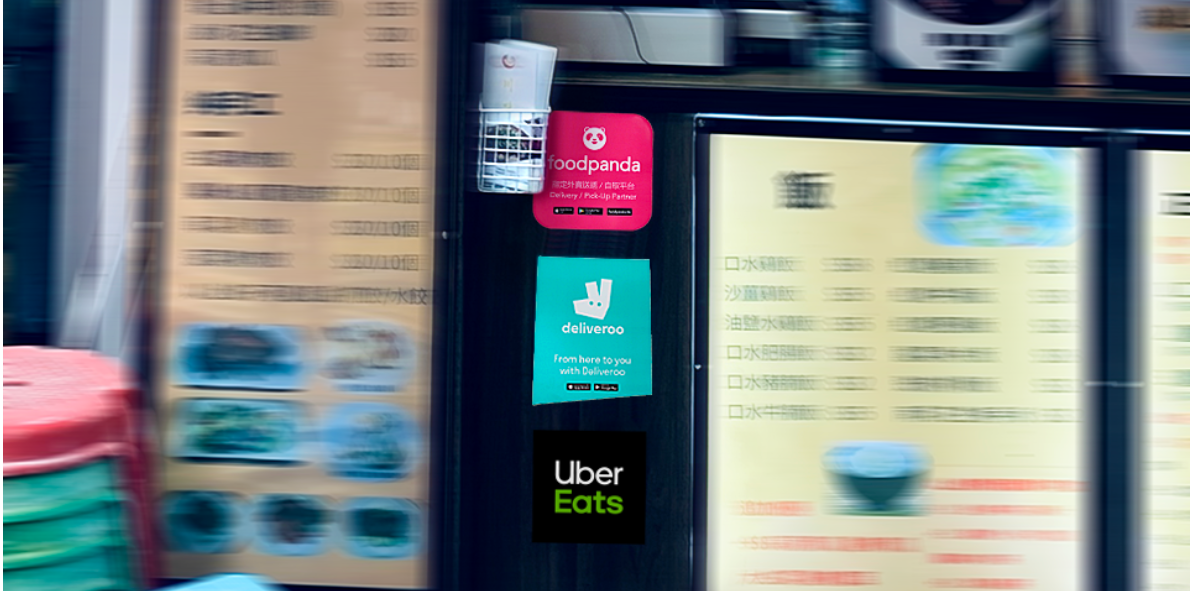European luxury brands pride themselves on their heritage. In the US, newer names have built brands on innovation like narrow ties and a jetsetter lifestyle. But how do the sales for these companies compare in their home markets versus abroad? In today’s Insight Flash, we look at luxury spending trends in the US versus the UK, peeling back the onion to get to industry, subindustry, and brand-level trends.
With snow covering much of the U.S. and wreaking havoc in many southern states, we looked at consumer behavior in Texas, where the cold snap triggered widespread power outages and acute hardship. As the mercury dropped in Texas so did spending: down 19% YoY a full 14 points lower than the rest of the country in mid-February. With all sectors except Big-Box retailers and Grocery trending down double digits in Texas, even usually buoyant Online Marketplaces and Food Delivery Aggregators underperformed there by over 25 points.
Footfall across Europe’s clothing, hospitality and leisure industries has fallen by almost a third so far in February amid a broader consumer sector decline as the continent faces a new wave of the virus. All in-store activity indices are pushing lower as reports of tightening restrictions and slow vaccine roll-out appear to be hitting consumer confidence and mobility according to data from Huq Industries.
In this Placer Bytes, we break down Target and dive into Kohl’s and Ross. It may be stating the obvious at this point, but Target seems poised for an exceptionally strong year. After seeing visits hover just under 2019 levels for most of the spring and summer, September and October drove visits that were up 2.6% and 5.2% year over year. Yet, like most other retailers, the resurgence of COVID cases impacted visits driving a year over year visit gap of 8.5% in November and 5.4% in December.
This month’s data represents the clearest indication yet that rent prices are rebounding in markets across the country. Our national index increased by 0.7 percent over the past month, the largest monthly increase since the summer of 2019. The data continue to exhibit significant regional variation, but the days of plummeting rents in pricey coastal markets appear to be coming to an end, with cities such as San Francisco and Seattle experiencing positive month-over-month growth for the first time since the start of the pandemic.
It’s that time of year again. No, we’re not talking about college basketball season — it’s tax season. _Womp womp._ This year, filing your taxes will involve jumping through even more hoops than usual with social distancing requirements, stimulus checks, and unemployment. Tax season officially started on February 12, but TurboTax has already been ramping up for what's ahead, releasing over 100 new creatives since January 30.
Digital Heat is an easy-to-use heatmap to help you quickly identify at scale which industries and companies are most impacted by the current economic environment. The report tracks in near real-time year-over-year (YoY) weekly website traffic trends. On a macro level, it highlights directional trends – industries that are poised to benefit, and those that remain vulnerable. On a micro level, this monitor can help isolate differences within an industry.
Credit Benchmark have released the February Credit Consensus Indicators (CCIs). The CCI is an index of forward-looking credit opinions for US, UK and EU Industrials based on the consensus views of over 30,000 credit analysts at 40 of the world’s leading financial institutions. Last month suggested improving sentiment for EU Industrials, but this month’s CCI has dropped back below 50 and sits lower than the US CCI.
Digital Heat is an easy-to-use heatmap to help you quickly identify at scale which industries and companies are most impacted by the current economic environment. The report tracks in near real-time year-over-year (YoY) weekly website traffic trends.
On a macro level, it highlights directional trends – industries that are poised to benefit, and those that remain vulnerable. On a micro level, this monitor can help isolate differences within an industry.
In this Placer Bytes, we dive into the surprisingly strong performance of Best Buy, Big Lots ongoing opportunity, and the trajectory of Sprouts and Kroger. A resurgence of COVID cases right before Black Friday should spell doom for a brand that is heavily oriented around that specific day. Yet, while Best Buy certainly felt the impact in offline visits, the company seems to have weathered the storm quite effectively.
With alcohol delivery sales reaching new heights in the pandemic, American Airlines has recently announced its plans to start a wine delivery service to sell some of its surplus wine that isn’t being consumed on flights. However, an increasingly crowded category and rising consumer demand means that market share among DTC wine companies has shifted over time.
American Trucking Associations’ advanced seasonally adjusted (SA) For-Hire Truck Tonnage Index increased 1.4% in January after rising 1.2% in December. In January, the index equaled 114.6 (2015=100) compared with 113.1 in December. “Over the last four months, the tonnage index has increased a total of 3.3%, which is obviously good news,” said ATA Chief Economist Bob Costello.
In this Placer Bytes, we dive into the impressive results from the TJX portfolio, and the Q4 performances from Dillards and Macy’s. The wider TJX portfolio had an exceptional end to 2020 and a very strong start to 2021. Visits to T.J. Maxx, Marshalls, and HomeGoods locations quickly overcame a visit drop between October and November as COVID cases surged and then sustained the positive momentum into 2021.
The European defence industry is making a strong recovery from the effects of the pandemic as worker activity reaches its highest level since the outbreak began. On-site staffing has reached over 70 percent of pre-Covid 19 figures, and are continuing to rise ahead of the wider European industrial sector.
In order to properly assess the performance of companies across borders, it is important to understand the different macroeconomic contexts in which the companies are operating. Consumer Edge recently enhanced its dashboard tools for industry and subindustry-level data, allowing for easier analysis of 26 industries and over 100 subindustries on both sides of the Atlantic.Major differences emerge in the spend breakdown between the US and UK over the last year.
On December 29, 2020, the Internal Revenue Service (IRS) began to distribute initial direct deposit payments for the second round of stimulus checks to consumers as part of the U.S. response to the COVID-19 pandemic. The IRS sent check payments beginning the following day, on December 30, with an official payment date of January 4. According to the IRS, most recipients would receive payments via direct deposits. The second round of payments were generally $600 for single individuals and $1,200 for married couples filing a joint tax return. Those with qualifying children should have also received $600 for each child.
U.S. consumer spending has been altered by the coronavirus pandemic. Our data reveals that consumers are changing the way they pay for goods and services, with some industries seeing spending shift toward online purchases. Additionally, the pandemic has changed the types of purchases consumers are making, with stimulus recipients increasing their spending on big-ticket items. By analyzing industry-level data, consumer spending trends can provide insight into which sectors of the economy are recovering fastest. Overall, consumer spending in January versus the same month in 2020 is up 28 percent across all sectors, an aggregation of over 5,200 major U.S. companies.
Private companies go public for many reasons; to pay off debts, to provide exits for founders, to generate publicity or to fuel growth. Often companies on the verge of growth will increase their expenses, hiring employees to fuel that growth. LinkUp jobs data can provide a unique insight into the type of roles these companies are willing to spend money to fill.
Transits through British ports have climbed back to pre-Brexit levels and delays are showing signs of creeping down. Levels of traffic dropped by more than a quarter after the trade deal was struck and delays jumped by 15 per cent as port officials struggled with the new rules, according to Huq Industries high frequency index. But freight volumes have risen back to 94 per cent of normal levels before Covid-19 – roughly equal to their pre-Brexit levels – and they appear to be still rising.
A growing divide in credit quality and default risk for the US and UK retail sectors emerged in recent years. Since Credit Benchmark began tracking data on the retail sector, default risk has been higher for the UK than for the US, a trend that persists with the latest monthly update. In recent months the gap in default risk between US and UK retailers has been getting wider.






























































